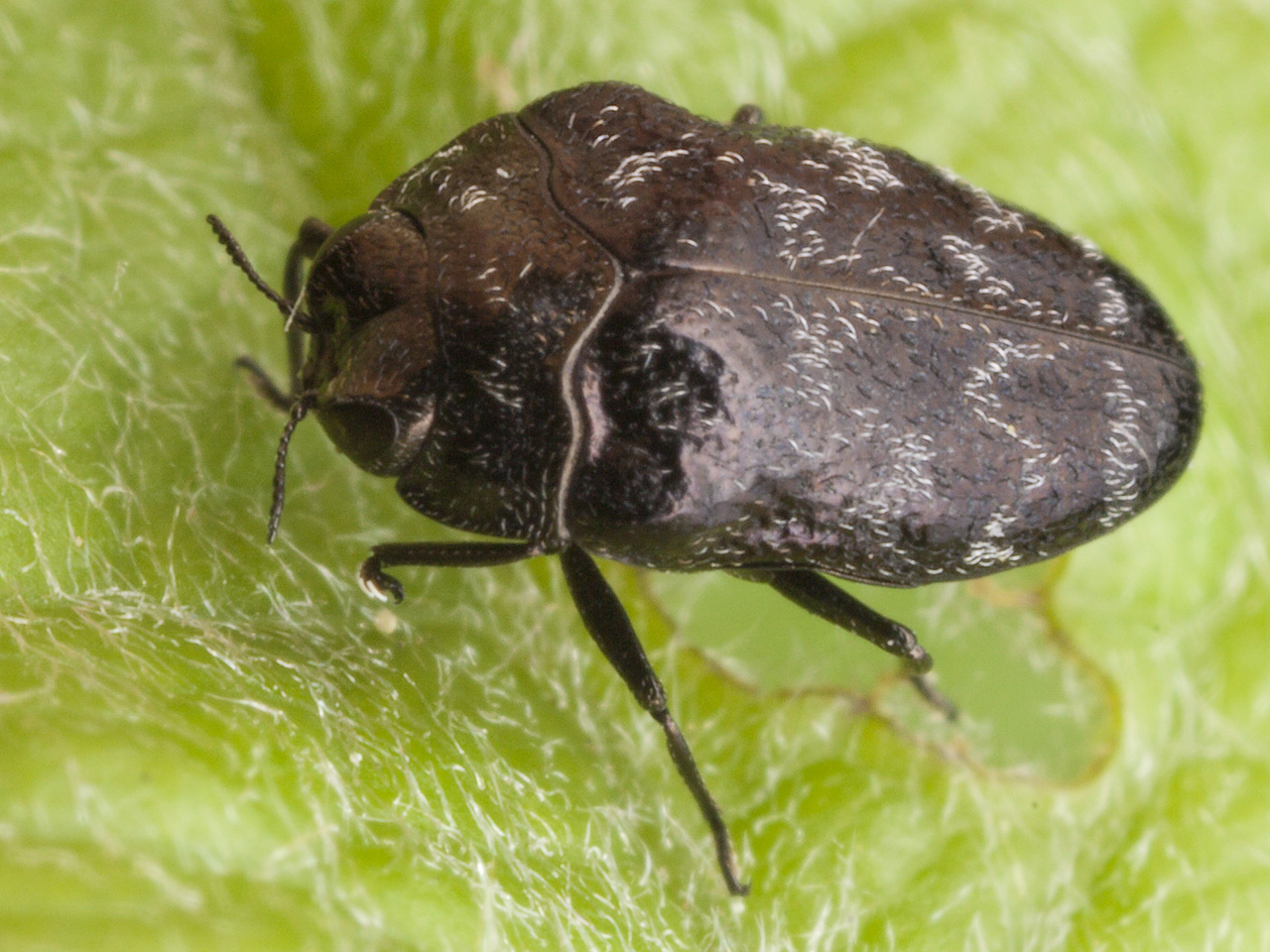
Trachys minutus · mažylis blizgiavabalis
- metallic wood-boring beetle
- Gemeine Zwergprachtkäfer, Laubholz-Kleinprachtkäfer
- mažylis blizgiavabalis
- pozornik mały
- Videpraktbagge
ukbeetles.co.uk/trachys-minutus
This is a locally common and widespread species throughout Europe, extending to high latitudes in Scandinavia although not reaching the Arctic Circle, and east through Asia Minor and Caucasus to Siberia. Adults occur from April to July, although in southern latitudes they may be present into September, and the typical habitat is old deciduous woodland. Here the host plants having been recorded from Ulmus, Corylus, Tilia, Pyrus, Betula, Alnus, Crataegus, Frangula and a range of Salix, during warm spells the adults are active among foliage but remain among leaf-litter or in the soil when it is cool. Adults feed upon host foliage for a while before mating in the spring and oviposition occurs during April and May; the female chews a depression into the leaf margin, usually near the tip, and lays a single egg, generally only one to a leaf, and seals the surface with a secretion which turns shiny black and will remain visible through the season. The larva mines the leaf, producing a large and irregular dark blotch through which long strands of faeces may be seen and, after a few weeks, the light-grey and shiny larva is obvious. Development is rapid and the larva is fully grown within 4 to 6 weeks, pupation occurs within the mine and the flattened shiny-black pupae is obvious on the dorsal surface of the leaf. Adults overwinter among leaf-litter or in tussocks etc. or remain in the fallen leaf until the following spring.
Adults are distinguished among fauna by the broad-oval form and dark metallic black dorsal surface with 4 undulating transverse lines of pale pubescence across the elytra. 2.7-3.5mm. entirely black with a metallic violet lustre, that on the pronotum contrastingly metallic bronze. Entire dorsal surface with sparse, short pubescence and with transverse lines of much longer pale hairs to the elytra and, usually, to the pronotum. Head widely transverse and concave anteriorly, with small eyes and short, almost filiform, antennae with 2 enlarged basal segments. Pronotum widely transverse; broadest just before acute posterior angles and evenly narrowed to projecting anterior angles, the basal margin strongly bisinuate and bordered, punctation fine and indistinct apically becoming stronger and more distinct towards the base. Prosternal process dilated and rounded apically. Elytra only slightly longer than wide, with distinct humeral swellings and uneven shallow depressions. Sexes similar and not separable on external morphology.
‥
0 comments
Add a comment